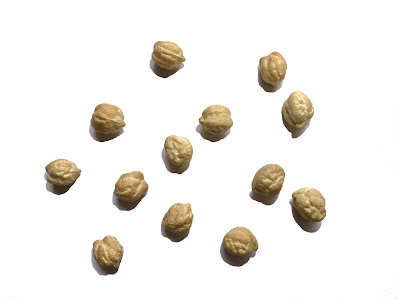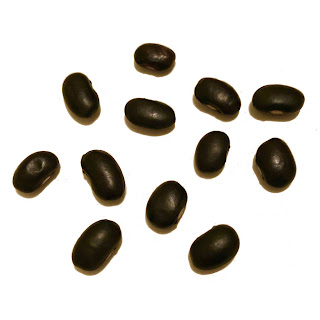chickpeas
 When I started thinking about this blog, I asked many of my friends what their favorite beans were. Almost all of them, coming from South Asian, French and Italian, Jewish, and just plain white backgrounds, said chickpeas. This speaks to the incredible ubiquity and versatility of chickpeas, which are found in many forms and in many cuisines around the world.
When I started thinking about this blog, I asked many of my friends what their favorite beans were. Almost all of them, coming from South Asian, French and Italian, Jewish, and just plain white backgrounds, said chickpeas. This speaks to the incredible ubiquity and versatility of chickpeas, which are found in many forms and in many cuisines around the world.Also known as garbonzo beans in Hispanic regions, these mighty beans are not only universal across space, but across time as well. In fact, they were one of the first crops in the history of agriculture to be domesticated around 10,000 years ago, along with barley, lentils, peas, and flax [1]. 7,500 year old chickpea seeds have been found in the Middle East, before the bean made its way to India as early as 2000 BC [2].
Ironically, despite their popularity, the origin of their unusual moniker remains a mystery to many chickpea lovers. Unlike black or red beans, for example, the name "chickpea" seems to have little to do with the bean's appearance. It also has nothing to do with their place of origin, which is the case for many beans, such limas or Great Northerns. For chickpeas, the explanation is not so simple.
The Latin name for chickpeas is "Cicer arientinum," which also happens to be where Cicero, whose family grew chickpeas, got his name [3]. Cicer became "pois chiche" in French, which became "chich-pease" in Old and Middle English. Funnily, "pease" was both plural and singular in Old and Middle English, and in the transition to modern English in the 17th century, "pease" was mistaken as plural. Thus came the modern word "chickpea" for a single bean [4]. If this mistake hadn't been made, we'd be calling one chickpea "chickpease," and multiple chickpeas "chickpeases" or even "chickpeasi" today!
The origin of the Spanish word "garbonzo" is also relatively unusual compared to other Spanish bean names like "pinto," which means "speckled." "Garbonzo" is thought to originate from the historic Basque language, which has no surviving relatives. In Basque, the word for chickpea is "garbantzu," which is the combination of the word "garau" for "seed," and "antzu" for "dry." The Spanish simply stole the word from the Basques! [4]
But enough about the name; chickpea recipes are just as interesting as the etymology! I've chosen three recipes to explore, all from different regions. Just like the chickpea itself, I'll start in the Middle East, with a recipe for hummus from a guest writer familiar with the region. Though hummus may unite our tastebuds in delight, a debate over it's country of origin follows political divides. Then, I'll travel to India with a recipe for "Chana Dal," which has a yellow color bright enough to please Hindu god Lord Vishnu. Finally, I'll make one of my favorite Italian and Niçoise street foods, a chickpea flour pancake called "Socca" or "Farinata," whose origin lies in an oily military conflict between Roman and Turkish soldiers.
[1] Bell, Susan. “The Small but Mighty Chickpea.” Phys.org, Phys.org, 31 Mar. 2014, phys.org/news/2014-03-small-mighty-chickpea.html.
[2] Advances in Agronomy. Elsevier. 2001. ISBN 978-0080543994. Retrieved 26 February 2018 – via Google Books.
[3] Trollope, Anthony. The Life of Cicero Volume 1. p. 42
[4] Dean, Sam. “The History of the Word Chickpea.” Bon Appétit, Bon Appétit, 30 May 2017, www.bonappetit.com/test-kitchen/ingredients/article/the-history-of-the-word-chickpea.


Comments
Post a Comment